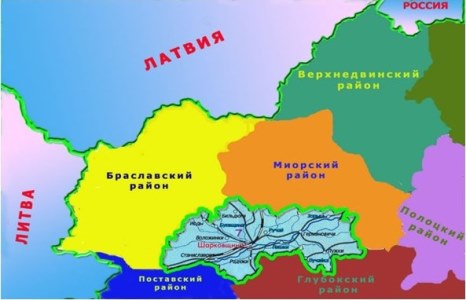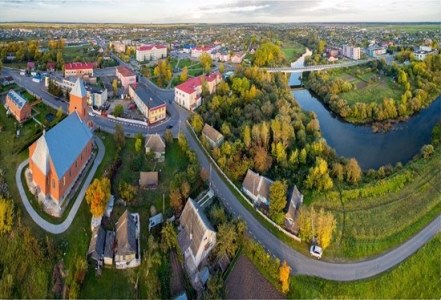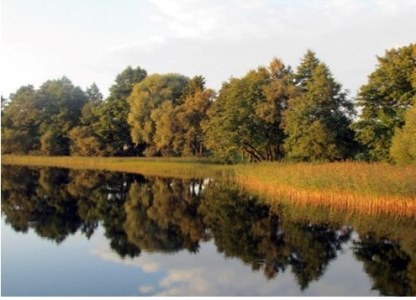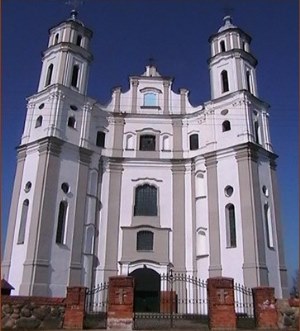Phone: (8-02154) 6 13 48
E-mail: rik@sharkovshchina.vitebsk-region.gov.by
Why Sharkovshchina region
 Sharkovshchina region is a territory that welcomes economic initiatives and is open for investment and cooperation
Sharkovshchina region is a territory that welcomes economic initiatives and is open for investment and cooperation
Sharkovshchina is a land of kind and hospitable, wise and talented people, modest tireless workers who are united by good aspirations and faith in a better life.
The history of our region goes back to the 10-12th century. At various times, the territory of the region was part of Minsk and Vilna provinces. And on the map of Vitebsk oblast, Sharkovshchina region appeared on January 15, 1940.
 Sharkovshchina region is located in the northwestern part of Vitebsk oblast and borders on Glubokoe, Postavy, Braslav and Miory regions. The distance to Vitebsk is 214 km and 190 km to Minsk. The administrative center is the urban settlement of Sharkovshchina. The total area of the region is 1189 km2.
Sharkovshchina region is located in the northwestern part of Vitebsk oblast and borders on Glubokoe, Postavy, Braslav and Miory regions. The distance to Vitebsk is 214 km and 190 km to Minsk. The administrative center is the urban settlement of Sharkovshchina. The total area of the region is 1189 km2.
Transport communications of the region are characterized by the presence of a developed network of public roads. 3.2% of public roads of the oblast come through the territory of the district. The key road is the road R-3 "Logoisk-Zembin-the border of the Republic of Latvia", which connects the urban settlement of Sharkovshchina with Glubokoe and Braslav, with access to Minsk and the border with the Republic of Latvia. There is a railway line with access to the industrial centers of the oblast and the Republic of Latvia.
 The main resource in demand today is the forest, which covers 20% of the region.
The main resource in demand today is the forest, which covers 20% of the region.
On the territory of the region, there is a unique natural complex of raised bogs – part of the reserve of international importance, belonging to the Ramsar territories – Yelnya, which is called the "lungs of Europe". There are11 lakes with a total area of 470.5 hectares and 4 artificial ponds with a total area of 35 hectares in the region; the Disna River with its tributaries flows from west to east. There are also 4 ancient parks of the 18th-19th centuries and 36 reserves of regional and local significance with an area of 6800 hectares. 3 species of birds (osprey, derbnik, black stork), listed in the Red Book of the Republic of Belarus, are taken under protection.
 There are a number of facilities of cultural and historical value, including the Church of the Icon of the Mother of God "Joy of All Who Sorrow" (1912) in the center of Sharkovshchina, the Holy Assumption Church on the banks of the Disna River, the Church of the Transfiguration of the Lord in at. Germanovichi (1787). On the territory of the region, 19 facilities are endowed with the status of historical and cultural value.
There are a number of facilities of cultural and historical value, including the Church of the Icon of the Mother of God "Joy of All Who Sorrow" (1912) in the center of Sharkovshchina, the Holy Assumption Church on the banks of the Disna River, the Church of the Transfiguration of the Lord in at. Germanovichi (1787). On the territory of the region, 19 facilities are endowed with the status of historical and cultural value.
Sharkovshchina region is the birthplace of many outstanding people: People's Artist of the Soviet Union, folklorist, founder of the State Academic Choir of the BSSR Gennady Titovich, People's Artist Pavel Dubashinsky, artist and poet Pyotr Kostyukevich, poet and writer Mikhail Mashara, artist and ethnographer Yazep Drozdovich, Lazar Perelman – a man who revived Hebrew. The rural way of life gave our area a subtle charm of the hinterland, where time goes by measuredly, where labor on the ground and every harvest is highly valued, where people modestly talk about their successes, but welcome guests with all the breadth of their souls.
Modern and developing, Sharkovshchina region today is primarily an agricultural area with great industrial potential, a well-groomed and comfortable region center for living. This is a region with an interesting historical and cultural heritage.
The basis of the region's economic potential is the agricultural sector of the economy, which is represented by 8 agricultural organizations and 17 peasant (farm) enterprises. The basis of agriculture is meat and dairy farming, the production of grain, rapeseed, potatoes and vegetables. In the structure of gross agricultural output, animal husbandry totals more than 60%.
An analysis of the distribution of small, micro-organizations and individual entrepreneurs in the context of the region shows that most of them are concentrated in the urban settlement of Sharkovshchina (75.6%) (The sectoral structure of small business is heterogeneous. The largest share of those employed in the private business sector falls on wholesale and retail trade - 46% of the total, 11.7% for agriculture, 4.7% industrial enterprises. The industry of the region is represented mainly by small and micro-enterprises.
There are examples of successful creation of small businesses in the manufacturing sector in the region. Since 1996, the enterprise PTUP "Komplekt-M" has been operating in woodworking. The main products of which are: wooden pallets, pallet covers. Products are delivered for export.
For example, private enterprise LLC "Drev-Invest" operates in woodworking. The main type of manufactured products are wooden pallets. Products are delivered for export.
Enterprise UE "Brizant-Resources" on the territory of the region has implemented an investment project "Construction of a plant for processing peat and producing noble substrates for agricultural purposes."
A condition for preserving the legacy of the past, maintaining the conditions and quality of life of the population of the region is a sustainable economy. Today, there are no large industries in the region and the list of enterprises is small, which acts as a limitation for replenishing the local budget, which ensures the social development of the territory. Today, the regional administration is open for cooperation and considers the private sector and investment in the economy as the main source for economic growth and the creation of new jobs. At the same time, it is important that all organizations and individuals be involved as much as possible in these progressive processes.
In the future, the development of the region is associated with the development of promising types of economic activity and industries that are in demand on the market for goods and services and effectively use the conditions and resources of the local environment.
We are sure that having visited us at least once, you will fall in love with our region just as we love it!













 Reception of the Regional Executive Committee
Reception of the Regional Executive Committee Reference Data
Reference Data